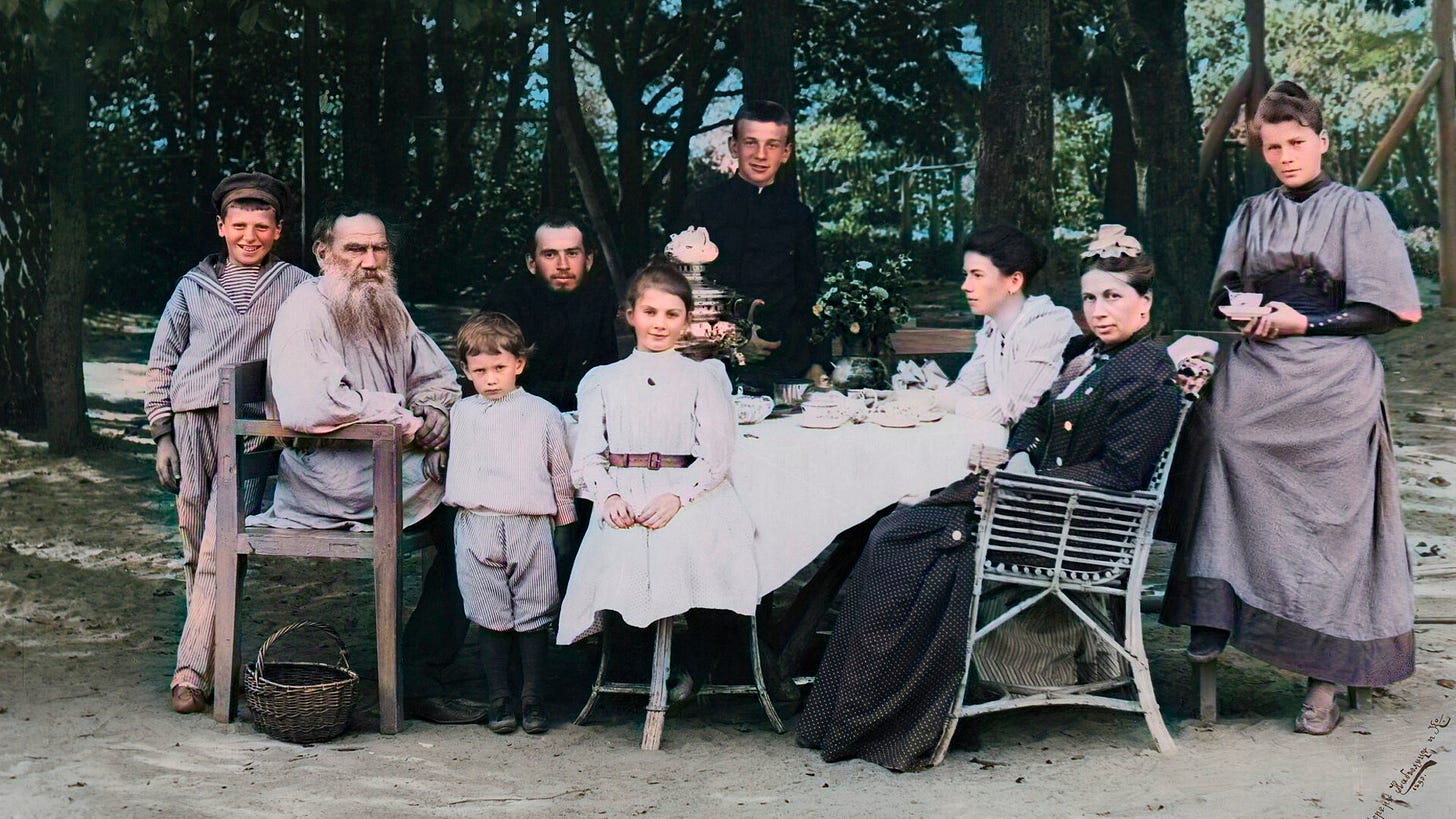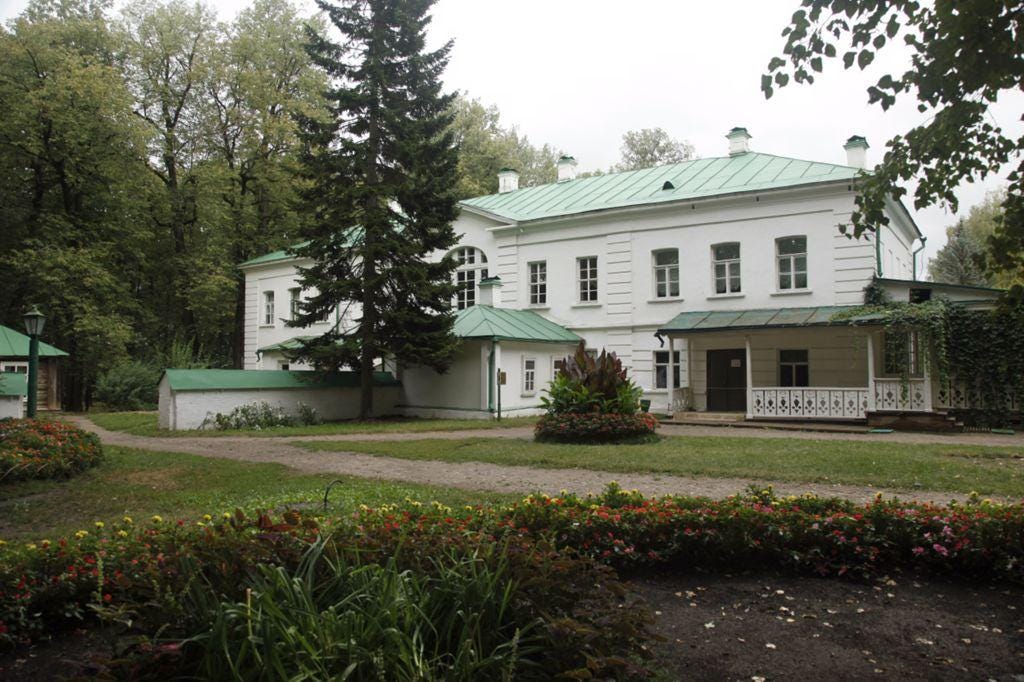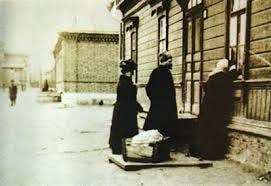Lesson 6: A beginner's guide to Leo Tolstoy & ANNA KARENINA
All unhappy families…are not nearly as messy as the Tolstoys.
If you only read the biographical broad strokes, the condensed list of bullet-point items in Tolstoy’s long life, you can get the safe impression he’s a pill.
After losing both of his parents before he turns 10, he holds onto his brothers and dreams about an idyllic family life. When he marries and has 13 children, he considers sex and lust as sinful and marriage as an institutionalized form of prostitute, according to The Kreutzer Sonata, though, decades earlier as a young man, he contracted STDs and impregnated a peasant woman with an illegitimate son on his estate.
These contradictory cycles of extremes—sexuality and abstinence, overwork and sloth—follow Tolstoy from his childhood to his years at the University of Kazan. He crafts an improvement plan of intense exercise and moral studies. He actively documents his views on morality with quotes from Dickens, Shakespeare, and Jean-Jacques Rousseau. He also privately lashes, or whips, his body. Then, to the other end, he gambles and visits brothels. He moves back and forth between two polarities throughout his life, often fixated on whatever he doesn’t have.
Note: Dostoevsky, who shared a gambling addiction, countered he did not come from money, so he wrote to survive. Tolstoy, on the other hand, had the safety net of his estate and title. This background echoes in their work, the characters they create, the philosophies they eschew in Crime and Punishment and Anna Karenina. While Crime and Punishment’s Rodion Raskolnikov wonders about the aspiration to greatness, Anna Karenina wonders about the reputational fall of the nobility.
So he’s a man of ideas and contradictory actions. He’s comfortable living in the idealistic philsosophy and psychology, which made him a great observer of human motivation. As Encyclopedia Britannica writes, “Those who visited Tolstoy as an old man also reported feelings of great discomfort when he appeared to understand their unspoken thoughts.”

Anna Karenina is his thesis on this preservation of the family idyll by exposing its corruption. Konstantin Levin and his love interest, Kitty Scherbatsky, are based in his courtship and marriage of him and his wife, Sophia Behrs. (Sometimes, she is also referred to as Sonya as a diminutive of Sophia.)
In this period, when Tolstoy writes Anna Karenina following War and Peace, is the last peaceful moments of his marriage. He and Sophia married in 1862, Tolstoy is 34 and Sophia is 18. They marry “after much indecision,” according to Amy Mandelker’s notes. Tolstoy was friends with Sophia’s mother (only two years his senior), and he knew Sophia and her two sisters. He pursued all three of them before he married Sophia, the youngest. (“He felt, as it were, that he had to be in love with one of the sisters, only he could not quite make out which,” Levin thinks of Kitty and her sisters in Part I, Chapter VI of Anna Karenina.)
During their 48-year marriage, Sophia is pregnant 16 times. She delivers 13 children, and eight survive to adulthood. The other child, the most important and volatile, is her husband. NPR quoted Sophia’s diaries, where she wrote, “For a genius one has to create a peaceful, cheerful, comfortable home. Must have his works copied out innumerable times, must be loved and spared all cause for jealousy so that he can be calm.”
She handwrote everything Tolstoy wrote and acted as his editor. She corrected misspellings and grammar issues, but she also assisted with negotiating his contracts and advising on the content. She was the one who suggested War and Peace be published in one edition without serialization to maintain the sweep of the world’s sweeping scope. And she wrote, by hand, seven drafts of his 1300-page tome.
For Tolstoy, writing Anna Karenina was one of the most difficult periods of his life. In 1875, three deaths in the midst of Anna Karenina’s success brought him to suicidal ideation. He lost a baby son and a prematurely born daughter. His aunt Tatiana, who raised him and sponsored his education as a mother figure, died. He gave up hunting, one of his favorite pasttimes, because he didn’t trust himself around a gun.
When he turns to Sophia with his dark interiority, she doesn’t understand. Tolstoy turns to philosophical and religious texts for reassurance, beginning his venture away from fiction and toward a Christian revival.
For Sophia, her marriage sours with this turn to Christianity. In 1883, an aristocratic fan, Vladimir Chertkov, usurps Sophia’s role as Tolstoy’s trusted adviser. In 1889, he writes The Kreutzer Sonata, a book about the stream of consciousness of a man who murdered his wife and views the lust of a marriage as the ultimate evil. Though the book is never published, it’s read at social gatherings, sometimes by Tolstoy. Then, by 1891, Tolstoy secretly gives away his property and signs away the rights to his literature, which Sophia believed jeopardized their children’s future wealth. The cracks in their marriage become public, and people pity Sophia. Their marriage never recovers.
When Tolstoy, on October 28, 1910, senses Sophia digging around in his study, presumably to check Tolstoy’s will, he disappears in the middle of the night with his youngest daughter and doctor. They book a train ticket without a destination. When he contracts pneumonia and has to rest at a station master’s house in Astapovo, he refuses to let Sophia to his deathbed. The below photograph shows Countess Sophia Tolstaya peering through a window to glimpse her husband before he dies.
For this context, Anna Karenina is fascinating. It freezes the happiness in this marriage before Tolstoy’s ideas corrupt it. As an orphan, marriage and family is the primary curiosity of Tolstoy’s life, but the reality varied from the description.
Tolstoy’s timeline

1828: He’s born on the family estate, Yasnaya Polyana. (Today, it is approximately a 4-hour bus outside of Moscow, settled in the country.)
1830: His mother dies.
1837: His family moves to Moscow, then his father dies.
Keep reading with a 7-day free trial
Subscribe to self-taught to keep reading this post and get 7 days of free access to the full post archives.




